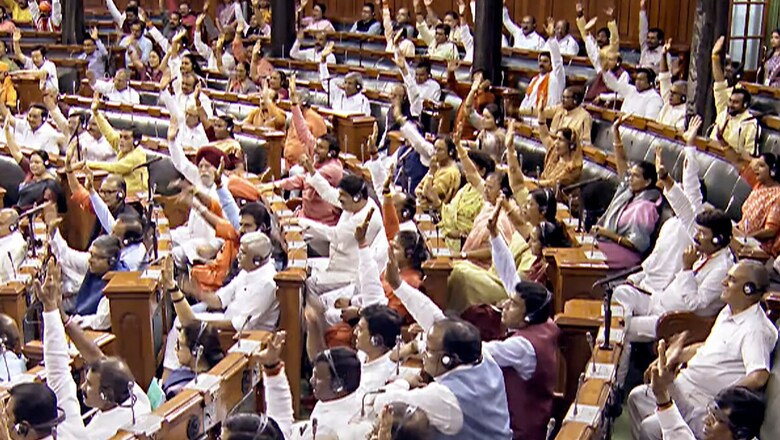
views
Now that a no-confidence motion against the Narendra Modi government has been admitted for debate by Lok Sabha speaker Om Birla, the stage is set for a high-stakes debate between the government and Opposition benches on the Manipur question.
The public vitriol in Delhi has so far been focused on the question of whether a debate on Manipur should have been preceded by a prior statement by the Prime Minister on the floor of the House or not – as evidenced by the public exchange of letters between Home Minister Amit Shah and Leader of Opposition Mallikarjun Kharge. That demand, which the Congress and Opposition parties have insisted on, led to the no-confidence motion being a clever go-around to force the issue.
With the BJP-led state government of N Biren Singh eliciting little confidence in its ability to calm the ground situation so far, allegations of bias by Kuki groups and the Union Home Ministry being directly involved in the security operations, the Opposition feels it has the ammunition to put the government on the defensive. The Modi government, on the other hand, will be looking to turn the tables as the battle lines are being drawn for Lok Sabha elections 2024.
Maintaining public order is a core requirement of the State. In that sense, the government’s response and the semantics of this debate matter. Yet, beyond the optics, Manipur is too serious a matter to be left to politics as usual or small brownie points that either side hope to gain from this debate.
First, the Lok Sabha numbers are such that the outcome of this debate – the 28th no-confidence motion in independent India and the second one for the Modi government after it defeated a previous such motion in 2018 – may not be in doubt. In the 543-member Lok Sabha (with an effective strength of 537), the NDA has 332 members (301 from BJP). The newly formed opposition block, I.N.D.I.A, has a strength of 142 seats. Several other parties (totaling up to 33) are as yet undecided.
Yet, the debate will be keenly watched for its battle of perceptions on several counts. Beyond finger-pointing, it must lead to a solution and a national consensus on the pathway to normalcy in Manipur. The facts are clear:
- Over 50,000 people displaced by the conflict are currently housed in 349 relief camps in the state.
- Over 6,000 FIRs have now been filed and each day brings news of more atrocities beyond the viral videos that shook the nation’s conscience.
- The writ of the state has been directly challenged in the state with reports of over 4,000 weapons being looted from security forces by armed groups. Only 18 % of these have so far been surrendered. This has been exacerbated by incidents where locals have held up ration convoys for security forces or when the Army was forced to release 12 militants in Imphal district due to 1,500 strong mob led by women.
- India has long dealt with secessionist insurgencies in the region but the nature of the current strife is different. The Meiti-Kuki divide has led to ethnic violence that is unprecedented in the state. The perception of a chief minister who is perceived to be biased and is yet to visit Kuki areas has not helped in calming social tensions.
- The violence now threatens to spread to other states which are now host to refugees from Manipur. A possible backlash against Meitis in Mizoram has just been averted after the Zoramthanga government moved quickly on threats.
The longer the strife continues in the border state, the more it harms not just Manipur, but the larger Northeast narrative (and the Look East initiative) and the wider Indian growth story itself.
The Northeast has often suffered in the past from what has been called the tyranny of distance from New Delhi. But now that the Manipur crisis is at the centre of the no-confidence motion in Parliament, it must lead to concrete steps to end the violence, full accountability of state actors with clear action plans and a return of confidence in Manipur.
Nalin Mehta, an author and academic, is the Dean of School of Modern Media at UPES University in Dehradun, a Non-Resident Senior Fellow, Institute of South Asian Studies at the National University Singapore, and Group Consulting Editor, Network 18. He is the author of The New BJP: Modi and the Making of the World’s Largest Political Party. Views expressed in the above piece are personal and solely that of the author. They do not necessarily reflect News18’s views.




















Comments
0 comment